an colonial street in the old quarters
the fountain at Plaza Zabala
the statue of General Don Bruno De Zabala who captured the fort from the Portuguese in 1724
the Legislative Palace
preparing the food for lunch
In
1723 the Portuguese built a fort on the hills around Montevideo Bay. Spain saw this as a threat to Buenos Aires, further
upstream the Rio de la Plata, attacked the positions and drove out the Portuguese.
They then brought in their own people
and a few families from the Canary Islands and named the place Montevideo.
Over the years the town grew in economic importance, competing
with Buenos Aires.
In the early years of the 20th century droves of Europeans arrived to start a new life.
In 1939,
after the
Battle of the Rio Plata, the damaged German cruiser
Admiral Graf Spee sought refuge in Montevideo harbor. When he
was not allowed to stay, the captain decided to scuttle his ship. Some of the hardware is on display at the quay.
We visited
Montevideo on a rainy day in March 2008 and had a short walk in the old city, then boarded a bus for a city tour.
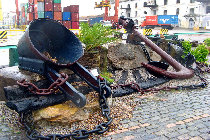
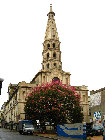



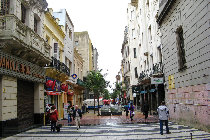
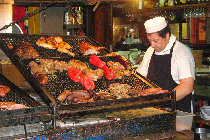



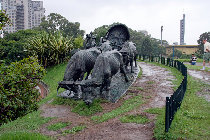






some of the recovered parts of the Graf Spee are on display at the harbor




the Iglisia de San Francisco









a modern walking area






the famous beaches of Montevideo are deserted when it rains



the statue for the fallen soldiers



there are many garbage collectors in Montevideo, most are horse powered









La Carreta in Parque de Los Aliados honors the settlers of Uruguay




















































